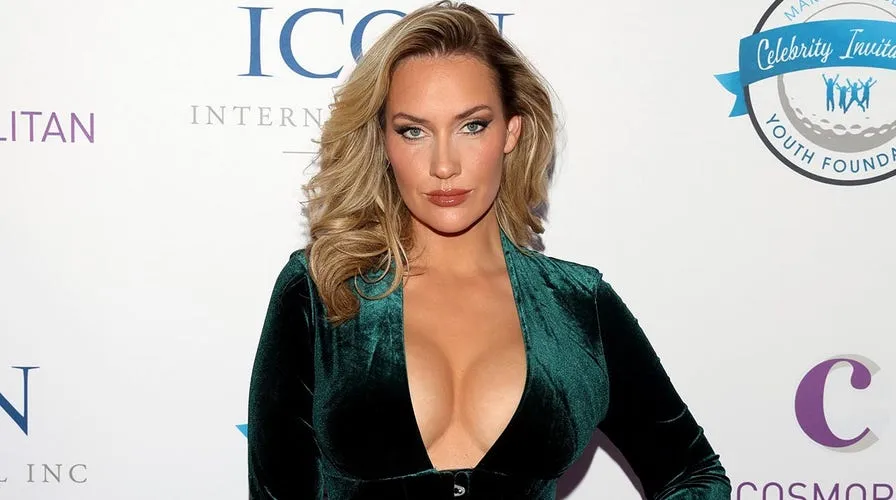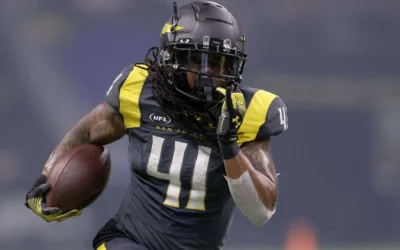In the often judgmental world of sports, few have faced as much scrutiny as Paige Spiranac, the social media sensation and golf influencer who has combined her love for the game with a striking presence on platforms like Instagram and TikTok. Recently, Spiranac found herself in the center of controversy over her choice of golf attire while practicing her swings at the driving range. To her surprise, the outfit deemed her ‘most conservative’ triggered an unexpected wave of criticism from some quarters, igniting debates about gender, clothing norms, and individuality in the sport.
For those unfamiliar with Spiranac, she has amassed a formidable following online thanks to her engaging content, which ranges from golf tutorials to candid discussions about the challenges and joys of being a woman in a male-dominated sport. Her fashion choices have often sparked conversations—both positive and negative. This latest incident, however, highlighted the lengths to which critics will go to judge not only her talent but also her personal style.
The Backless Outfit That Sparked a Reaction
Spiranac took to social media to showcase what she referred to as her ‘most conservative look’—a backless golf top paired with stylish shorts. The outfit was designed to provide comfort and freedom of movement while allowing her to express her unique sense of style on the course. However, what Spiranac saw as a lighthearted choice of attire was met with backlash from several observers, criticizing it for being too revealing and inappropriate for a sport that has long been viewed as a bastion of tradition and decorum.
In a heartfelt response to her critics, Spiranac shared her thoughts on the backlash she received, emphasizing the absurdity of the situation. “People are freaking out about this outfit,” she declared, clearly shocked that her intentions could have been misinterpreted. Her statement struck a chord with many, resonating with those who believe that fashion in sports should reflect the diversity and individuality of its athletes, rather than conforming to restrictive norms that often fail to acknowledge contemporary interpretations of style.
A New Wave of Fashion Critique
The debate over Spiranac’s outfit taps into a larger discourse about fashion, gender representation, and the evolving standards in sports. Traditionally, female golfers have been expected to adhere to a certain ‘look’—a combination of modesty and femininity that often sidelines personal expression. Spiranac’s backless top stands as a bold example of how athletes, especially women, are pushing back against societal expectations, opting instead for outfits that empower them.
Spiranac’s response underscores a critical point: clothing in sports should not be merely about appearances, but rather about freedom of expression and comfort. As she aptly put it, “I’m out here trying to play golf and enjoy myself, not fit into a box that others have created for me.” Her comments highlight an important theme: clothing choices should be seen as a personal decision, unshackled by the need to appease critics.
The Impact of Social Media on Athlete Image
Social media has revolutionized the way athletes connect with fans and express themselves. Platforms like Instagram and TikTok enable influencers like Spiranac to showcase not just their skills but also their personality and style. This immediate and wider reach creates opportunities for dialogue but also draws swift criticism. The very public nature of these platforms often amplifies reactions, resulting in a culture where athletes find themselves navigating intense scrutiny over their appearances.
Spiranac, who has faced her share of trolls and controversies, remains undeterred. Her ability to engage with her audience candidly humanizes her experience and fosters a connection that many followers gravitate toward. It also makes her the ideal figure to challenge outdated notions about women’s athletic wear. As she insists on the importance of body positivity and individualism, she endeavors to reshape what is considered acceptable in women’s golf fashion.
Body Positivity and the Role of Influencers
The criticism of Spiranac’s outfit also ties into broader conversations about body image and acceptance in sports. Influencers play a significant role in normalizing diverse body types and styles across various platforms. They have the power to challenge the traditional norms of beauty, especially in sports that have long been dominated by rigid expectations regarding how female athletes should look.
Through her bold choices, Spiranac hopes to inspire other women to embrace their bodies and express themselves confidently. Her presence in the golf world symbolizes a shift towards inclusivity and acceptance, illustrating that every athlete’s journey is unique and worthy of celebration—regardless of their appearance. “I want to encourage women to wear what makes them feel good, especially in an environment that can often be critical,” she stated in an interview.
Redefining Golf Culture
The backlash against Spiranac’s outfit is not solely about fashion; it reflects deeper societal attitudes towards women in sports. Golf, like many athletic arenas, has often been perceived as a sport steeped in tradition, one that places significant weight on conservative dress codes. However, the sport is evolving, with voices like Spiranac’s advocating for change. They argue for an environment where athletes, regardless of gender, can focus on their performance rather than conform to outdated standards regarding their attire.
This shift is critical for the younger generations of golfers who may feel stifled by conventional expectations. Spiranac’s assertion that women should not feel pressured to conform to a standard dress code empowers them to carve their own paths, both in terms of sport and self-expression.
Conclusion: A Personal Choice
As Spiranac continues to navigate her journey in the world of golf, she remains committed to championing individuality and empowerment through style. She has become not only a symbol of modern golf culture but also a voice for those who feel misrepresented by traditional standards. In a sport that often emphasizes conformity, her decision to wear an outfit that reflects her personality is an act of defiance against a culture that has long dictated how women should present themselves.
This wave of change, embodied by Spiranac, advocates for a more open-minded view of athletic apparel, urging both players and fans to reconsider what is deemed appropriate. Her statement encapsulates the essence of this movement: clothing should allow athletes to perform at their best while feeling authentically themselves. Ultimately, it is a personal choice—and one that deserves respect and understanding.
In the end, Spiranac’s experiences resonate far beyond the realm of golf, offering a glimpse into the broader implications of dress codes, body positivity, and individual freedom in sports. As she continues to engage with her audience and challenge conventions, she paves the way for a newer, more inclusive understanding of what it means to be a female athlete today.







